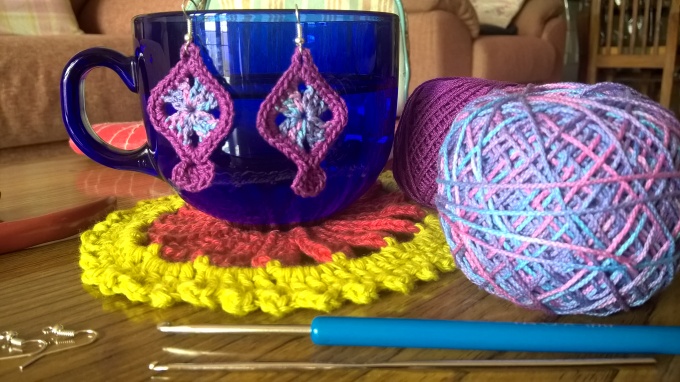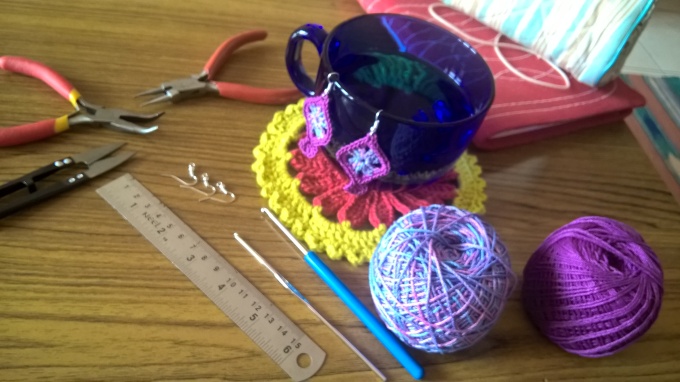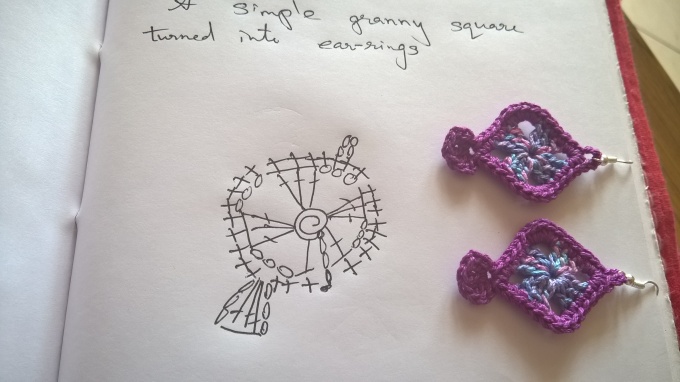Making your own earrings is a fun project which can be completed in minutes.
You can keep them for yourself or can make a wonderful homemade gift for your female friends and family members
Today I want to show you beautiful crochet earrings, made with new anchor thread launched


Square dangling earrings
Material
- any thread can work, have used anchor knitting yarn 2 colours
- crochet hook, have used 3.00 mm
- ear wires
- pliars to fix the ear wires
- scissors
Pattern
- make 3 chains and slip stitch to make a circle
- chains 3 and 2 dc's in the ring, You now have a cluster of three dc because the first 3 chains counts as the first dc.Chain three; this creates the space that will become your first corner.
- 3 dc into the ring Ch 3 to make your next corner.
- Repeat the previous step twice
- Slip stitch into the top chain of the first “chain 3” to close the round.
- change colour
- chain 1 and sc in the same stitch, sc in next 2 dc, 4 sc in the 3 chain space
- sc in each next 3 dc, 2 sc 4chain and 2 sc in next chain space
- sc in each next 3 dc, 4 sc in the 3 chain space
- sc in each next 3 dc
- 2sc 3 chains make 3 dc in the base chain after the sc, 3 chain 2 sc to create the tail of the earring
- slip stitch in the first sc of the 2nd row
Take the earwire and use your pliers to open the loop at the bottom. Hook the open loop of the earwire onto the 4chain loop of the square
Close the loop with your pliers.
























